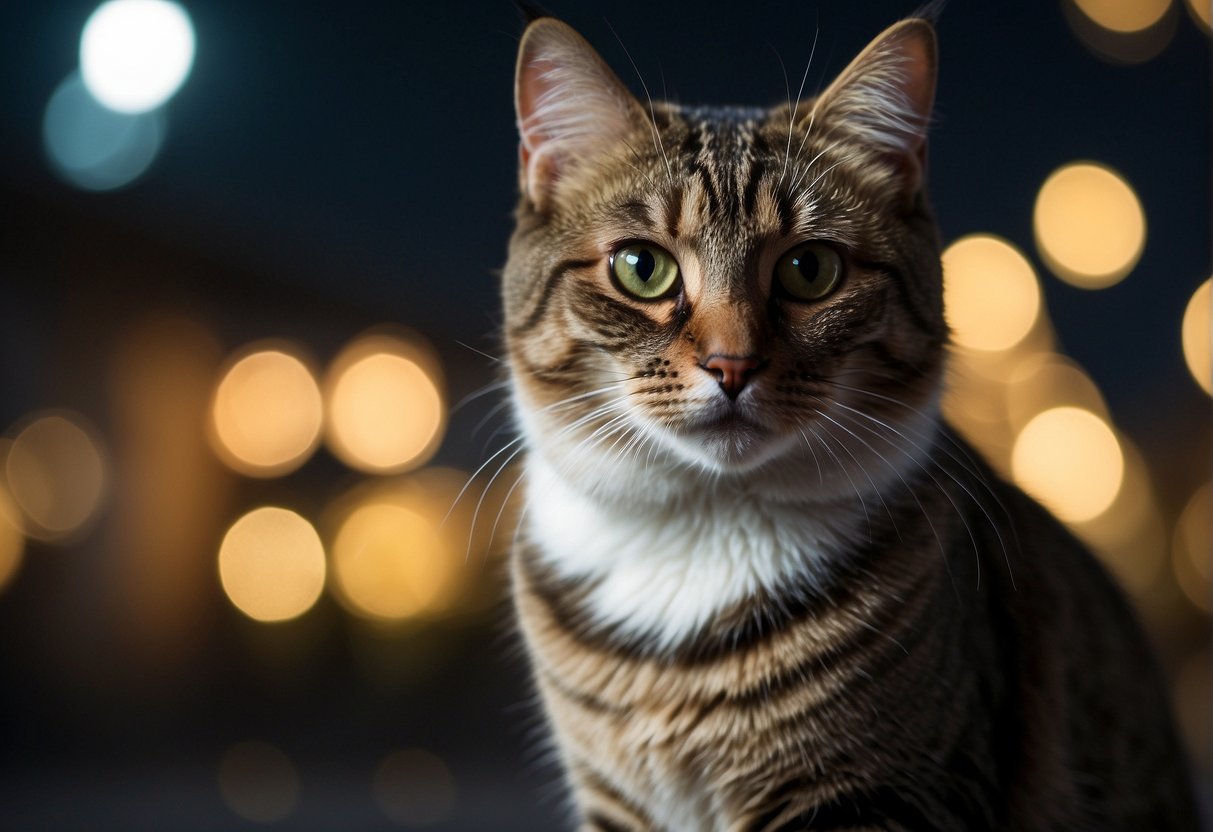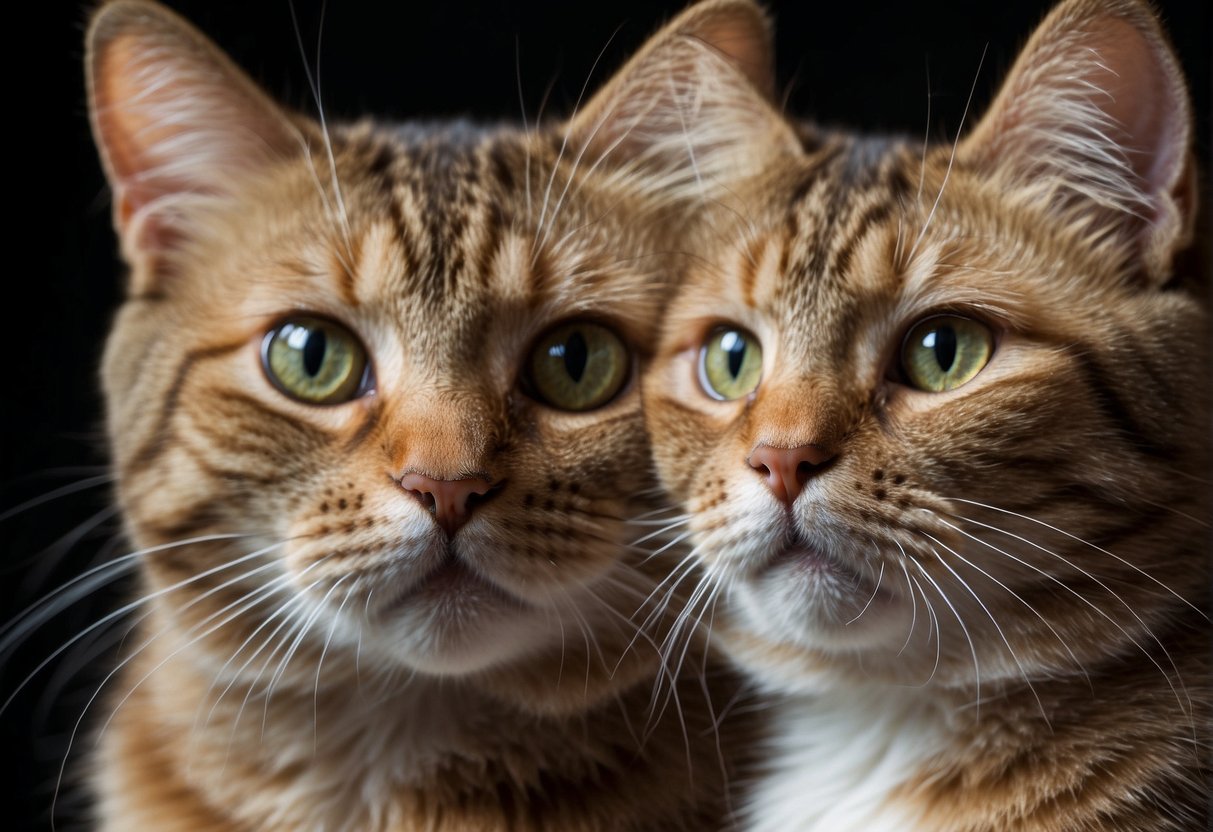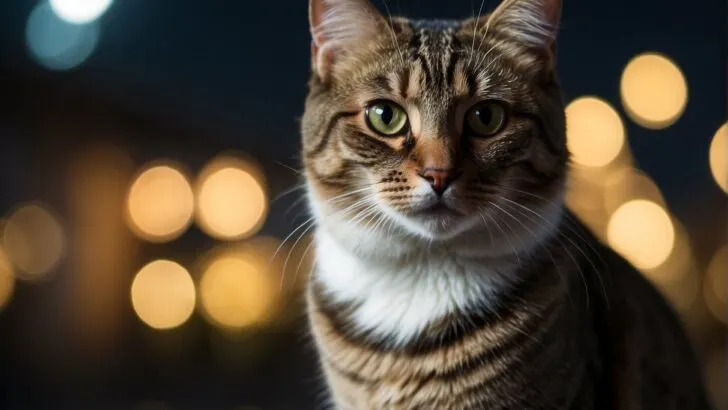When you notice your cat’s pupils are different sizes, a condition known as anisocoria, it’s understandable to be concerned. Anisocoria can be a harmless, temporary situation or a sign of something more serious.
For example, you might observe that your cat’s eyes respond differently to light due to a simple change in light exposure, or you may notice this discrepancy as a chronic condition hinting at underlying health issues.

Just like you, I’ve seen my own feline friend’s pupils differ in size occasionally. It’s been particularly evident when one side of their face catches the light from a window while the other is shaded.
However, anisocoria has also shown up in more concerning circumstances, like after a particularly spirited leap from the countertop didn’t go as planned, suggesting a possible minor injury.
It’s important to monitor your pet’s eyes for signs of anisocoria, which could indicate various underlying conditions ranging from a simple eye irritation to more severe neurological problems. Keeping track of any accompanying symptoms, such as changes in behavior or appetite, will be incredibly helpful for your vet to make an accurate diagnosis.
Understanding Anisocoria in Cats

When you notice one of your cat’s pupils is larger than the other, it can be quite alarming. This condition, known as anisocoria, is a potential indicator of a variety of health issues ranging from mild to severe.
Causes of Anisocoria
Anisocoria in cats may be caused by a number of health problems. Here’s a breakdown of possible causes:
- Injury or Trauma: A blow to the head or eye can lead to anisocoria.
- Diseases: Conditions such as glaucoma, uveitis, feline leukemia virus, retinal disease, and even cancer may manifest with this symptom.
- Neurological Disorders: Issues with nerves can cause anisocoria, with Horner’s syndrome being a classic example.
- Infection or Inflammation: An underlying infection or inflammation within the eye or the body can lead to unequal pupil sizes.
- High Blood Pressure: Elevated systemic blood pressure can affect the eye, resulting in anisocoria.
- Aging: Older cats may develop anisocoria due to iris atrophy or spastic pupil syndrome.
Symptoms and Diagnosis
When you’re concerned about your cat’s eyes, take note of the following potential symptoms:
- Vision Problems: Difficulty with vision, such as bumping into objects.
- Pain Indicators: Squinting, redness, discharge, or pawing at the eye could suggest discomfort.
- Behavioral Changes: Any change in your cat’s normal behavior should be noted.
If you spot these issues alongside anisocoria, it’s time to visit your vet for a proper diagnosis. During the visit, the vet may conduct a:
- Physical Examination: A thorough check-up to assess overall health.
- Ophthalmic Tests: Including a fluorescein stain, Schirmer tear test, and intraocular pressure test to investigate eye health.
- Imaging: MRI, CT scans, X-rays, or an ultrasound may be needed to look for trauma or neurological disorders.
- Blood Tests: To check for underlying infectious diseases or systemic conditions.
Treatment and Management
When you notice your cat’s pupils are different sizes, it’s important to understand the potential urgency and variety of treatments available. Seeking timely veterinary help can be crucial, and the available treatments will vary depending on the underlying condition.
When to Seek Veterinary Help
If you observe that your cat’s pupils are not the same size, it’s essential to monitor your cat closely for any accompanying signs of distress, such as changes in behavior or health. Emergency veterinary care should be sought if your cat displays signs of severe pain, difficulty seeing, or if anisocoria appears suddenly.
It’s also important to consider the possibility of an underlying condition that could be causing the difference in pupil size. Conditions like glaucoma, uveitis, or trauma can lead to more serious complications if not addressed quickly.
Available Treatment Options
The treatment for anisocoria will depend on the identified cause. After a thorough examination, your veterinarian may suggest several treatment options:
- Medications: Depending on the diagnosis, your vet may prescribe medications to manage the condition. This could include antibiotics for infections, eye drops for conditions like glaucoma, or other specific medications tailored to address the underlying issue.
- Surgery: In some cases, such as with severe trauma or advanced cases of glaucoma, the vet may recommend surgery to correct the problem or alleviate pain.
- Supportive care: For less severe conditions, or as part of a post-surgery recovery plan, supportive care, including pain management and monitoring at home, may be necessary to ensure a smooth recovery.
Monitoring Cat Eye Health at Home
Regularly observing your cat’s eyes is crucial for maintaining their eye health. Here are some pointers to guide you:
- Look for Symmetry: Your cat’s pupils should generally be the same size. Differences might indicate an issue like anisocoria.
- Check for Clarity: A cat’s eyes should be clear. Haze or cloudiness can suggest problems.
Inspect in Different Lightings:
- In low light, your cat’s pupils will naturally dilate to allow more light in, maximizing their photoreceptors’ capacity.
- In bright light, pupils constrict to protect the eyes from too much light.
What to Watch For:
- Discharge: Eyes should be free of excessive discharge. If present, note the color and consistency as it can help your vet diagnose potential issues.
- Behavioral Cues: Squinting, increased blinking, or pawing at the eyes are signs that something’s amiss.
- Physical Changes: A droopy eyelid may signal a problem.
| Signs to Monitor | Possible Concerns |
|---|---|
| Different sized pupils | Anisocoria, possibly indicating neurological or ocular concerns |
| Persistent discharge | Potential infection or blockage |
| Sudden vision loss | Immediate vet visit needed |
Prognosis and Long-Term Care
When your cat presents with unequally sized pupils, a condition known as anisocoria, the prognosis can vary widely based on the underlying condition. A prompt visit to the vet can help identify the cause, whether it’s a simple irritation or something more serious like neurological issues or trauma.
For mild cases:
- Most cats recover well with proper care and medication, if necessary.
- Your vet may recommend eye drops or ointments to treat an infection or irritation.
For more serious conditions:
- Long-term care often involves managing the underlying condition, such as hypertension or a neurological disorder.
- Lifestyle modifications might be necessary, including a controlled diet or indoor living to avoid further injury or stress.
Supportive care includes:
- Regular check-ups to monitor your cat’s overall health and progression of any eye condition.
- Ensuring a safe environment to prevent accidents if vision is compromised.
Maintain a stress-free home to foster recovery:
- Create a quiet and comfortable space for your furry friend with easy access to food, water, and litter boxes.
- Offer lots of love and reassurance. Cats can sense when you’re there for them!

My name is James, and welcome to FAQCats!
Along with our team of cat owners, expert pet enthusiasts, and pet professionals, we aim to write engaging helpful, engaging content about cats. At FAQCats we strive to provide content that’s accurate and fun to read. Our team writes about everything related to cats; even the most complex of topics. Through extensive research and caring for our own fur-pals, we’re able to provide something cat owners worldwide will love. Have a look around, and leave us feedback anytime!

